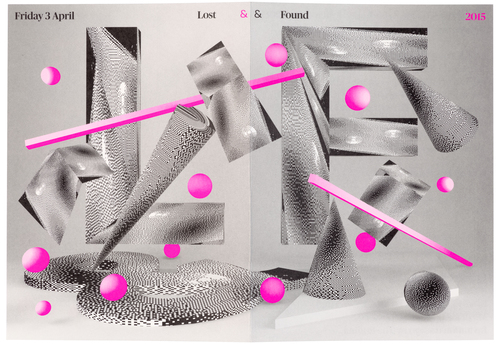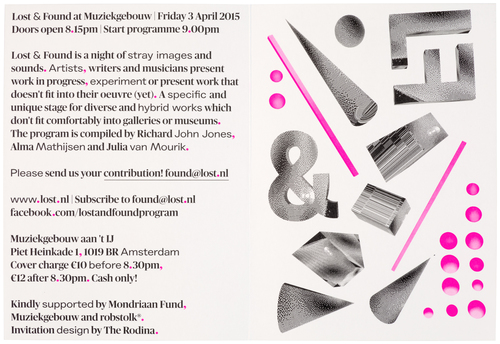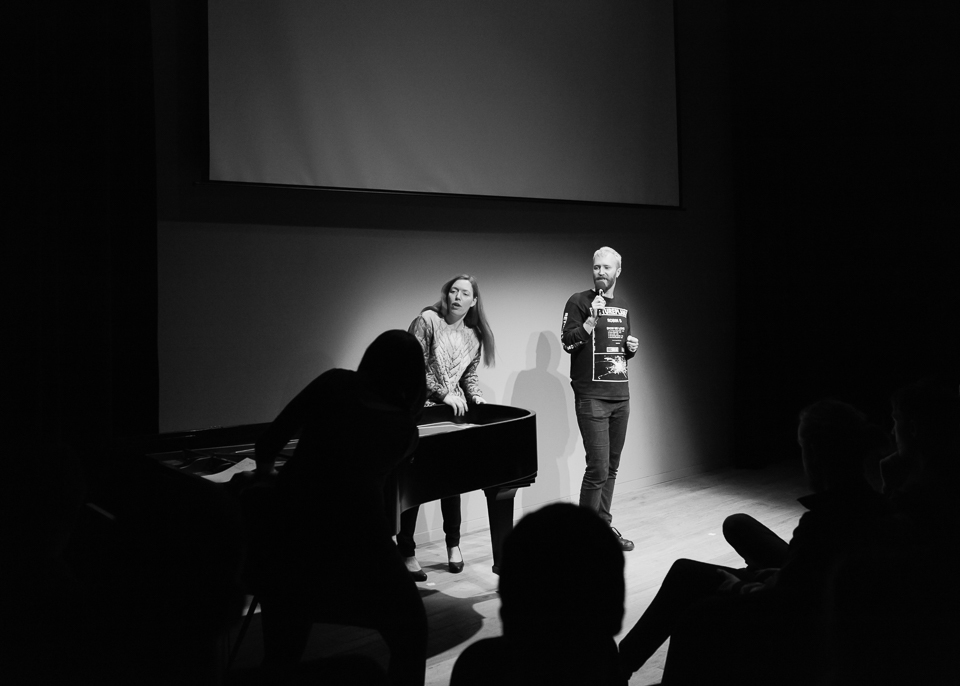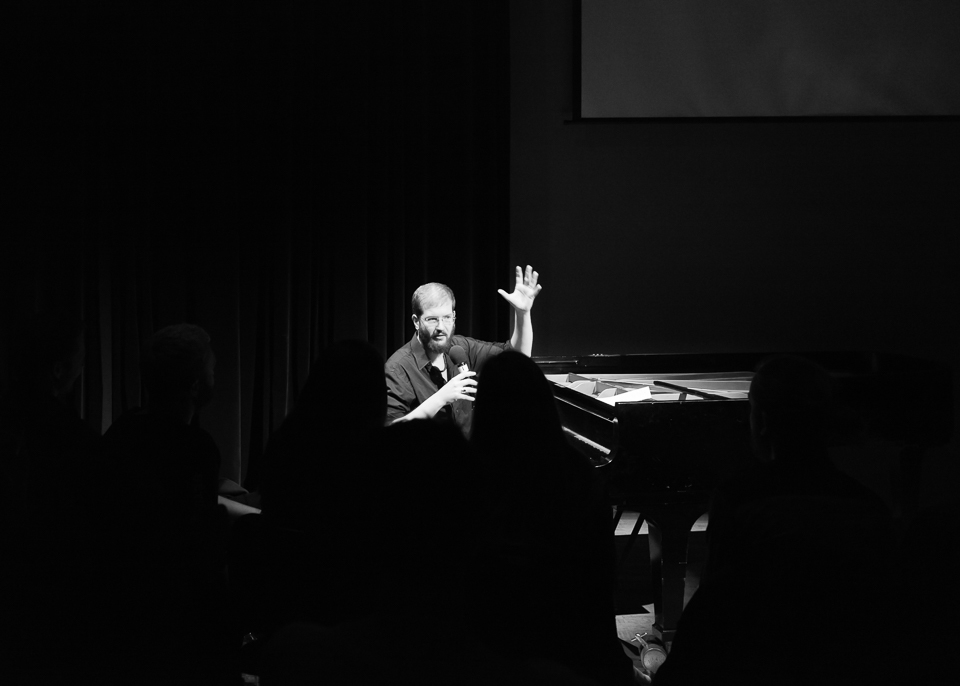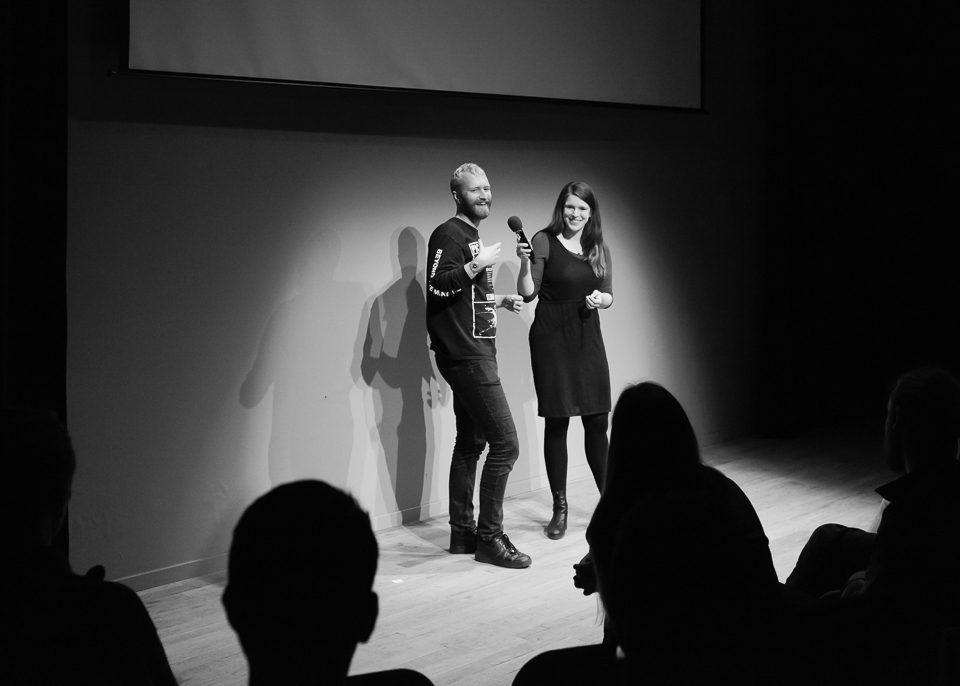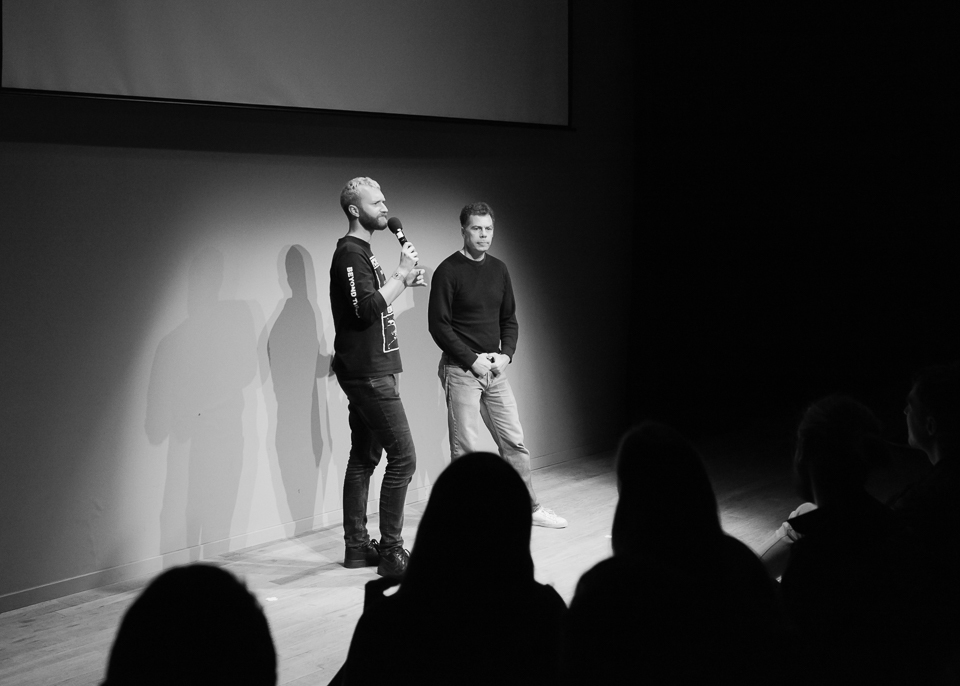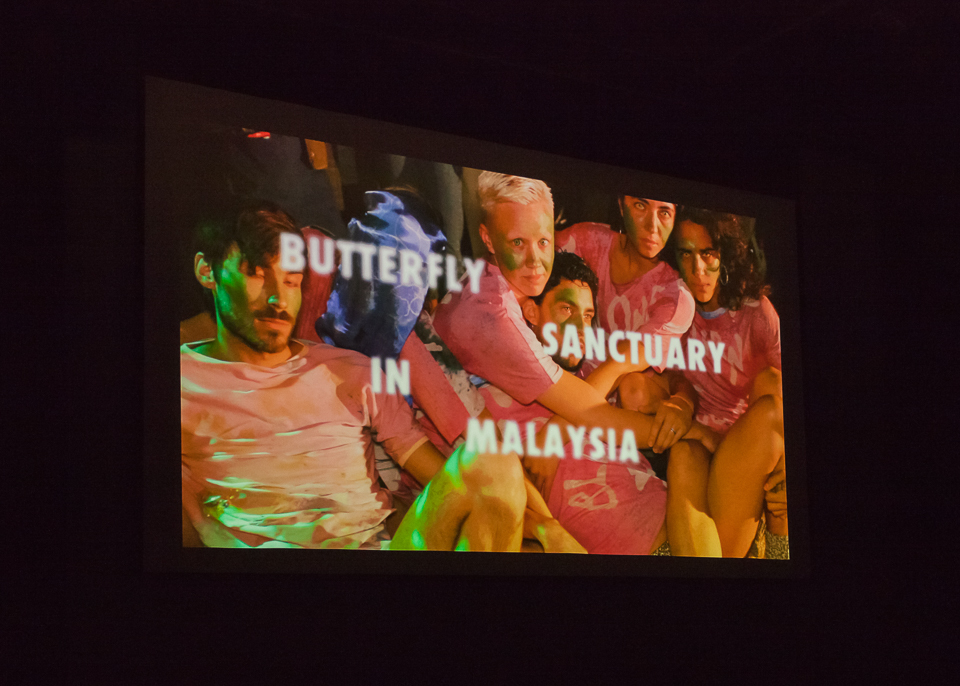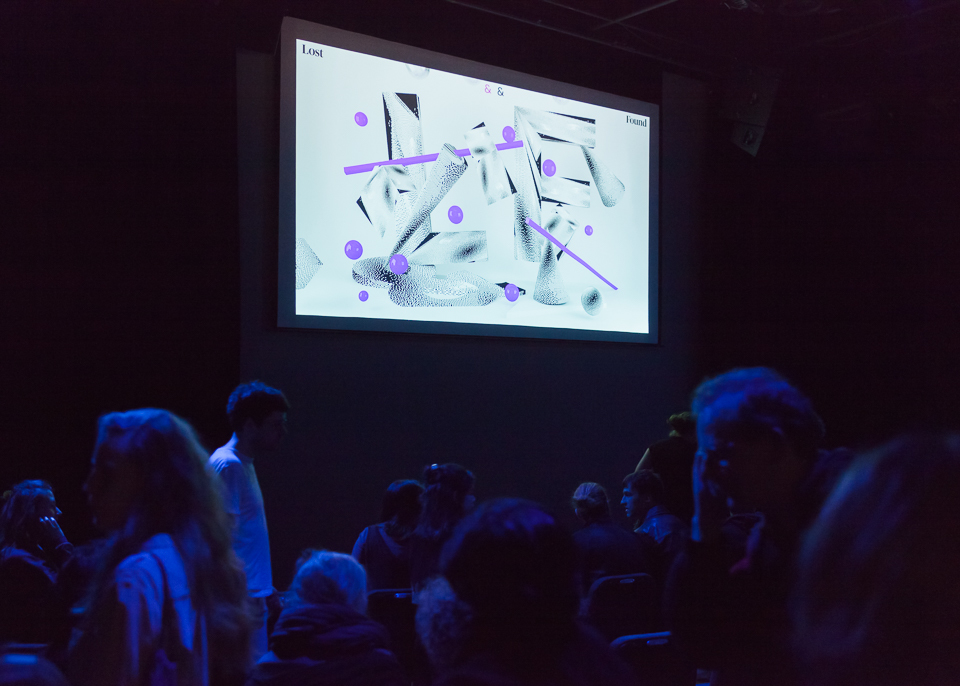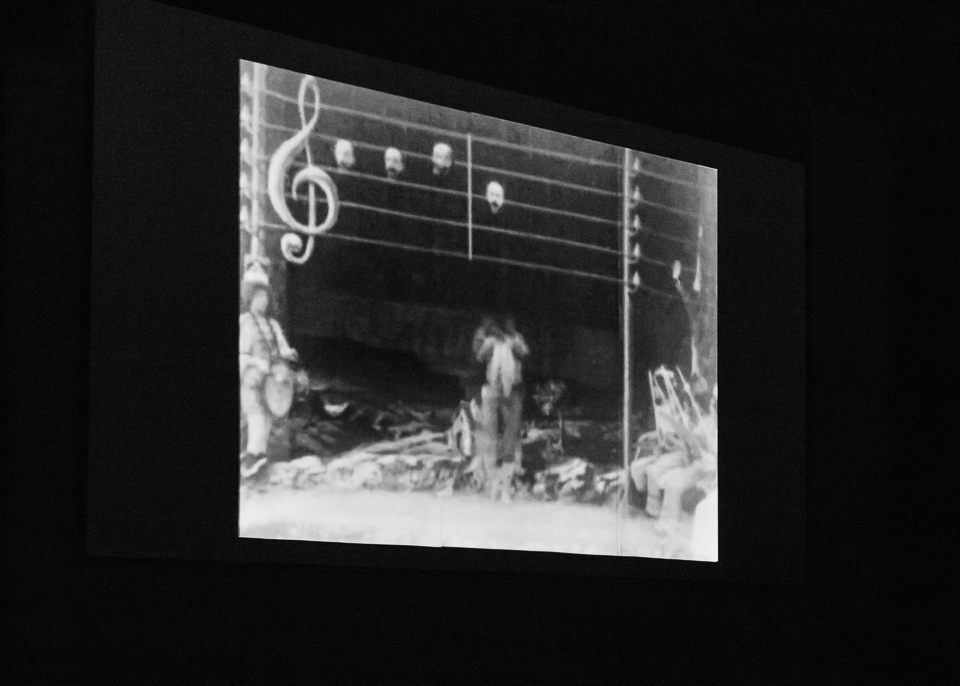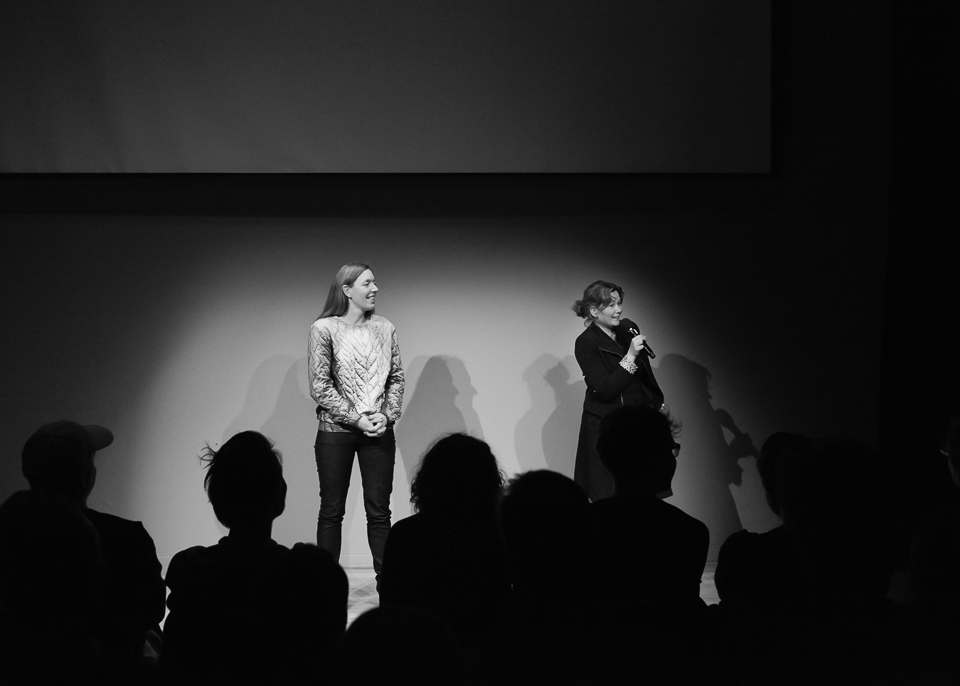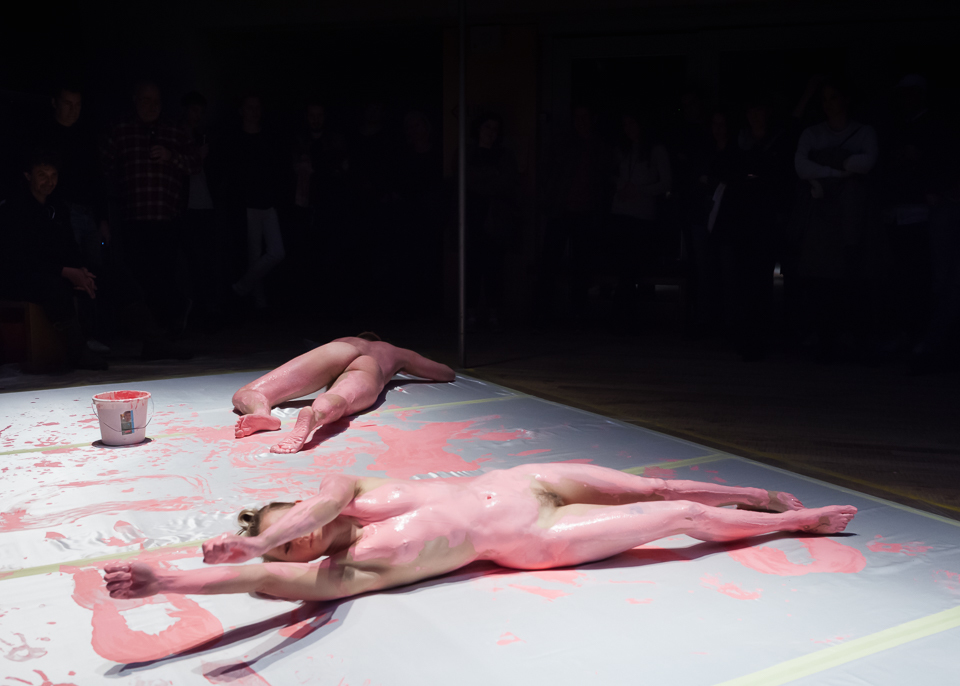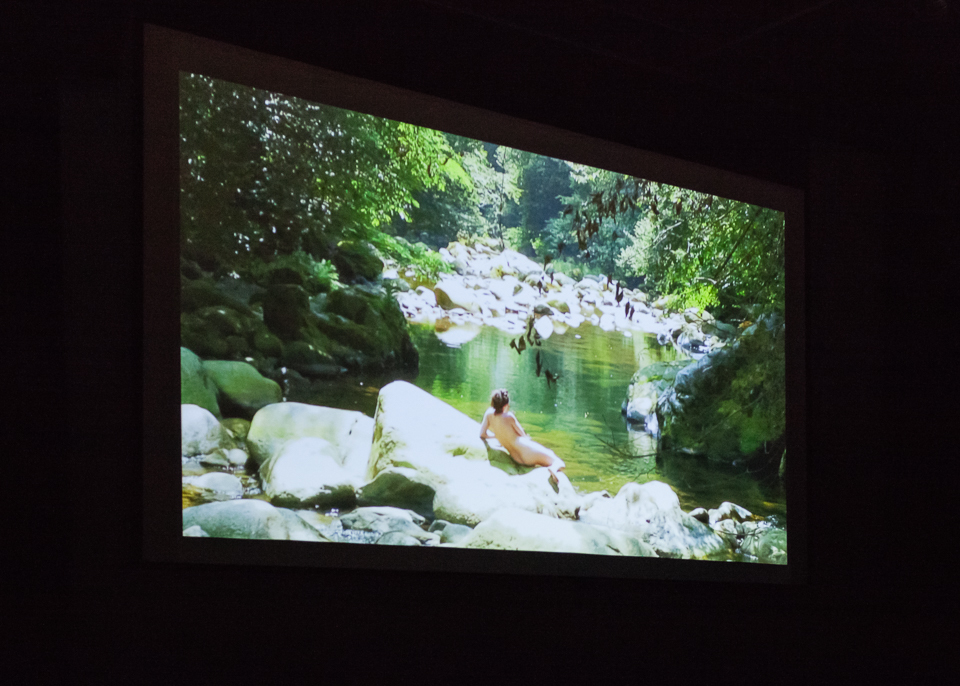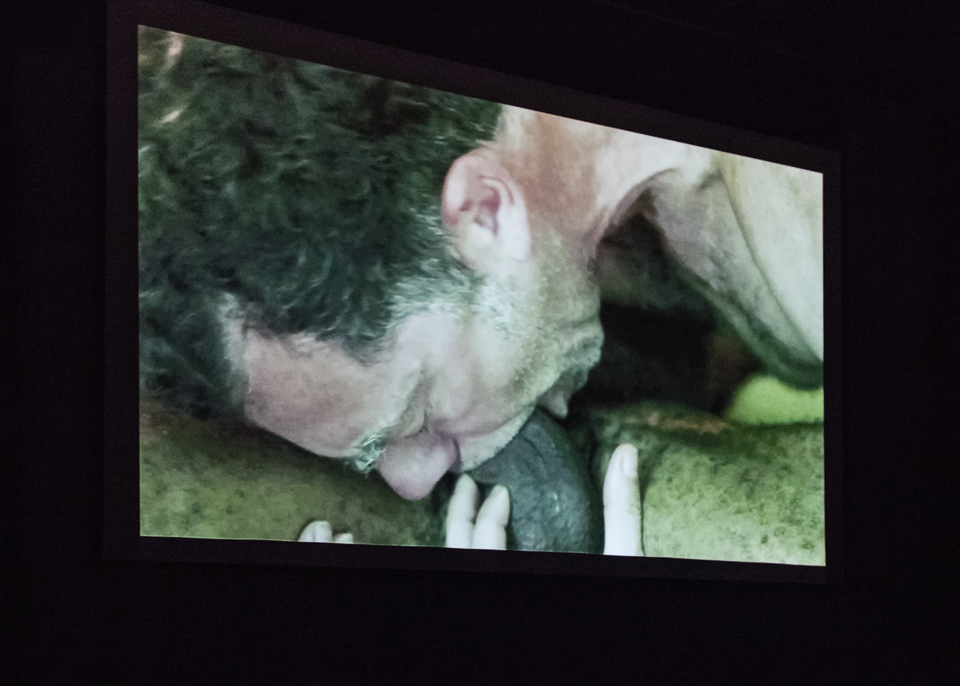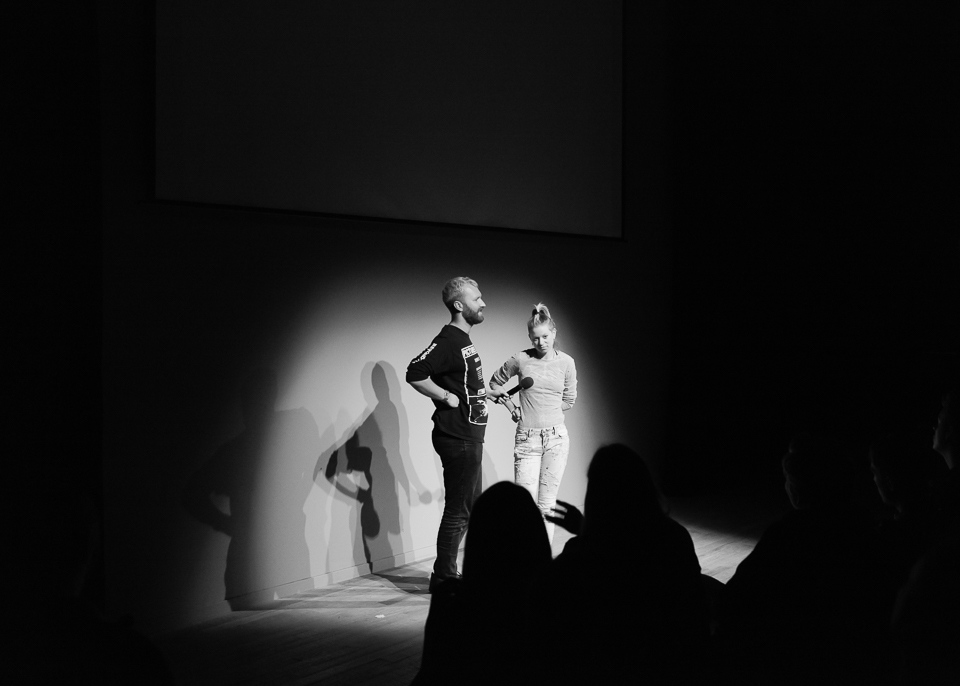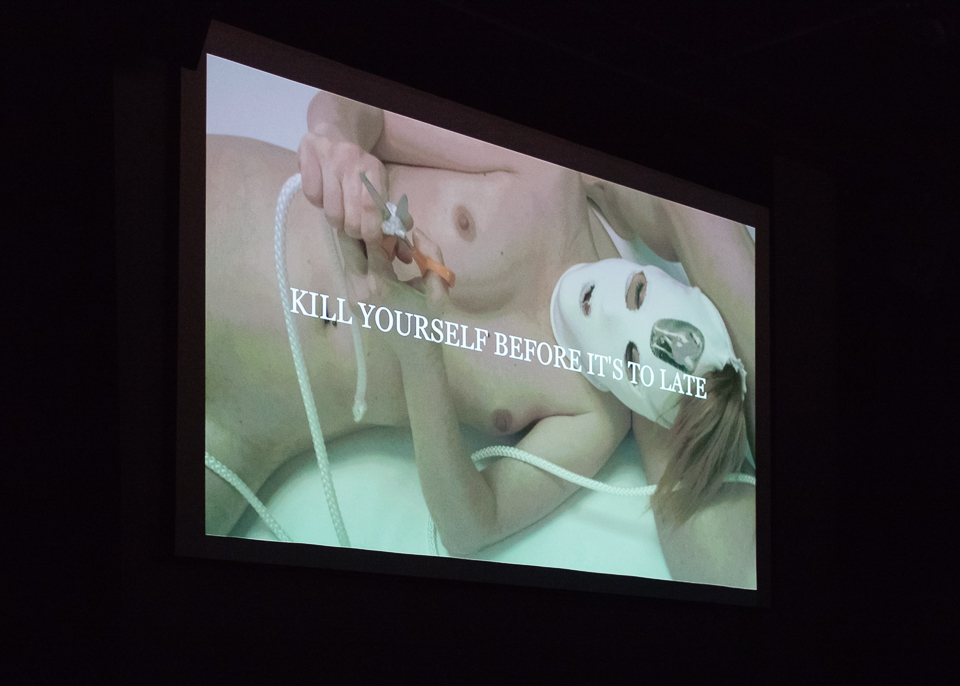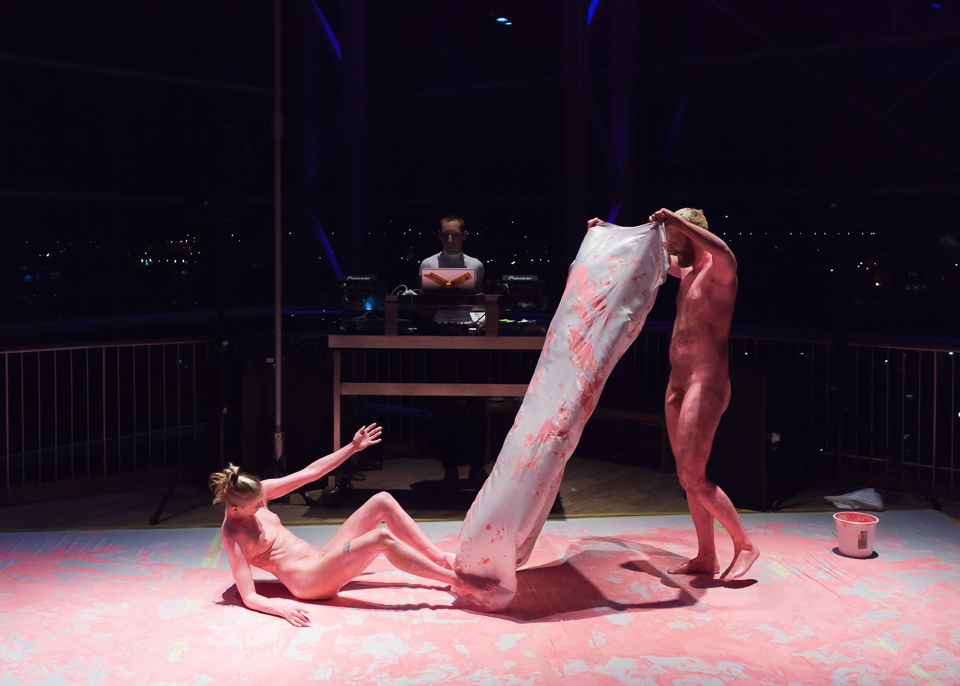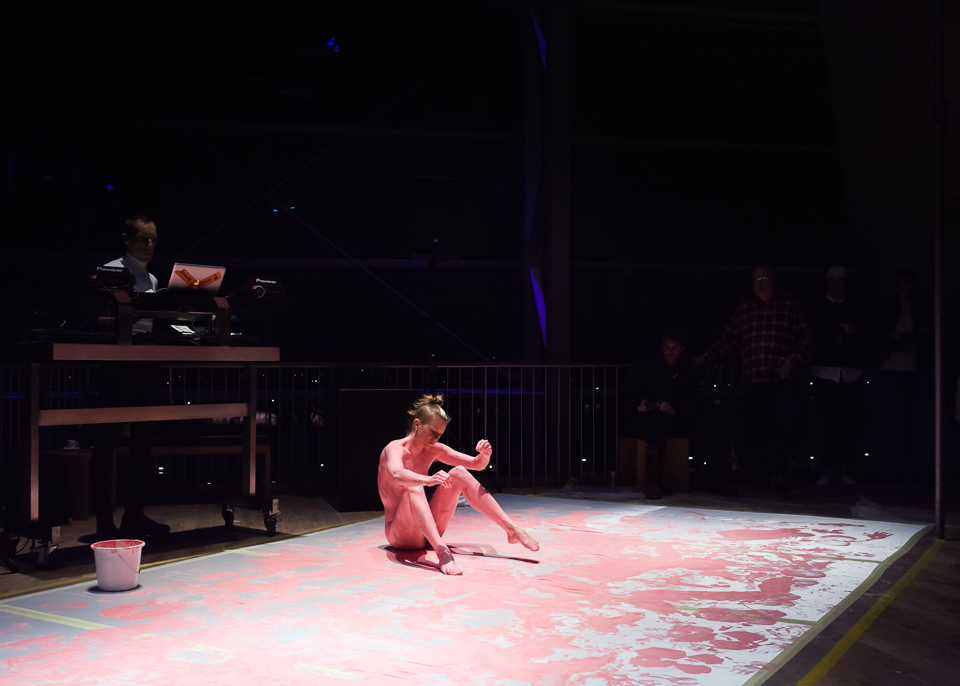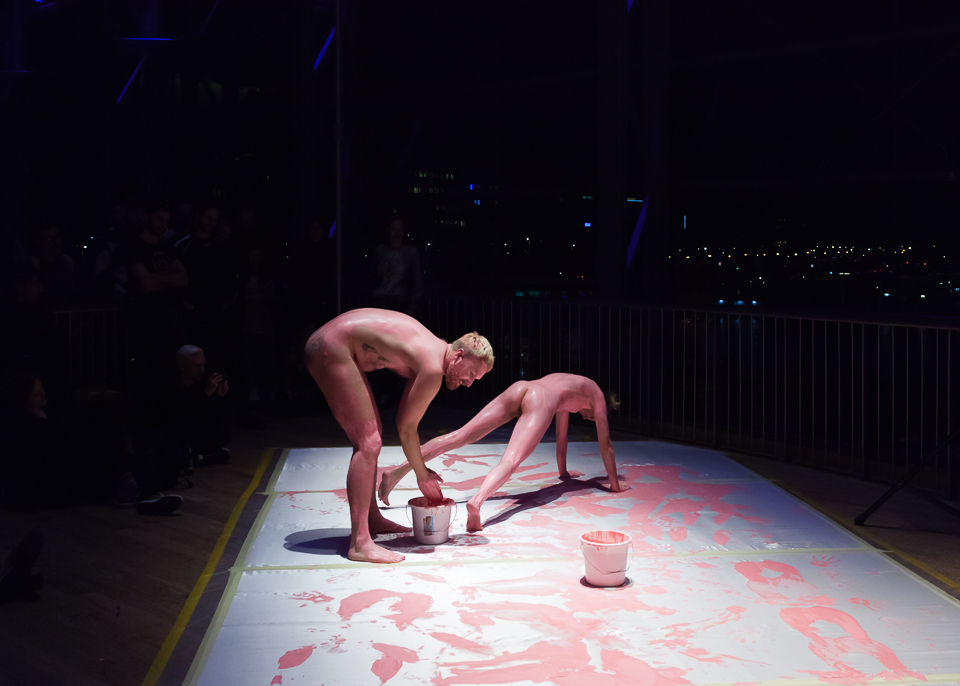Richard John Jones is the guest editor of this edition of L&F. He glows with a specific charm that isn't too hard to miss despite my near-sightedness. ‘Butterfly Sanctuary in Malaysia’ shows images of a building being torn down and two people doing yoga in a sun-lit room, as well as documentations of some of RJJ's past performance pieces. Every now and then a slogan-like statement in what seems to me like a Futura Bold (from Nike fame) appears and disappears all the while being accompanied by a soundtrack that is captivating and carrying.
After he invites jazz pianist Aki Spadaro, a piano on wheels gets rolled on to the stage and almost tramples RJJ. Aki is calm and collected and, admittedly, quite funny (with an accent adorned with the same jazz his music's made of). He introduces us to a silent film from 1903 called ‘The Melomaniac’ by French filmmaker Georges Méliès. The film, just shy of 3 minutes, shows a man (played by Méliès) marching in (a scene) with a bunch of ladies holding batons and throwing his head up multiple times on telegraph wires. (Roughly at this point someone sitting next to me kicks and breaks a wine glass.) The man uses the batons to form notes out of the suspended heads on the wires, and eventually after they dance to the music he just composed with the heads, he sort of scamper-dances out of the frame with the ladies and his heads fly off in various directions. It is frighteningly beautiful and leaves you with a spectrum of emotions that are difficult to convey, like a very weird dream from which you wake up so confused that you have to recalibrate yourself. On his three-fold presentation's first round Aki improvises a piece of music by just looking at the film and playing what it makes him feel like; without adhering to any expectations, he composes a score that is, well, simply beautiful. On the second round Aki plays a soundtrack that is bound to fit the dynamics of the film: joyful as they start dancing, nervous as Méliès tries to figure out –for a mere second -- how to haul the huge treble clef up on the telegraph lines. Finally we watch the film in silence; the room is mute like a fishtank but suddenly I hear everything. A girl is scratching her hand somewhere in the audience; and then the lights come on, and the applause is deafening. The piano rolls out like a heavy wooden door.
Judith de Leeuw presents her documentary about the ‘slightly alcoholic life-guards’. The documentary follows a group of quintessentially Dutch fraternity boys working their summer jobs, and they speak in a lingo that is passed from generation to generation, summer after summer to the next group of boys that replace the previous ones. Their work consists of preventing people from drowning and getting German nudists out of the water before anyone's traumatized. After work they come together around a table in the setting sun and chug beers, talking almost exclusively about the day's work in a way only a group that knows each other solely through work can. The dusk through the gold of the beer, the freckles and the blue eyes, the sun bleached hair with sand in it; the young and the tall huddled together carelessly: it is the most beautiful commercial Calvin Klein never made. And then they sleep with flies on their pasty, hungover faces.
From boys we switch to men in ‘Deepthroat Study #27’, and I think about how indelicate blowjobs can be. Christopher Westfall is a good student of his own study; this is a celebration of the absence of the gag reflex, maybe an absence of softness, it is goal oriented but by that I don't mean the money shot. His hand caresses the receiver's ball sack in a way that puts mozzarella in my mind. Both men in the video are quite sublime in the way they seem to have achieved an unworldly focus; the receiver silent and only represented through his beautifully bobbing ribcage (he could have been mistaken for dead otherwise); this guy is the CPR dummy of emergency dick sucking. And CW frowns sometimes; he's so focused that he has the face of a chin-rubber as he attacks and re-attacks the long, thinly dick with a mix of pride and love and lust; the beautiful green bareness of the room is overwhelming. CW is in the crowd and he comes on stage to answer some questions and he is so sincere and unpretentious that I begin to love the idea of a study for a sexual activity even more. Someone in the crowd asks what he has learned from it, you know, it being a study and all. He says that he knew what he was doing so he didn't learn anything new. I am encouraged that it didn't stop him from trying, and I'm enamored by this idea of being students in something we do often; I like this attention economy he wants to present. If only I could have sex, or do anything for that matter, each time anew with his studious attention.
During the break I find myself less clothed in the warmth. We are somehow closer to The Annunication now (unlike before). There is an unspectacular vulnerability in makers showing you what they make while you sit in the dark; everybody is suddenly happier and enriched and more relaxed.
I come to like Josefin Arnell's work in waves. After she presents a project (amongst other things) about her mother who is ill and her desire to take her to a healer I think the metaphorical search here is more valuable than actually going to the healer, which I guess is some sort of placebo effect through intention. All it takes for me to get touched is her just wording this thought alone, it seems, because she seems shy and sweet and I like my mom as well. Also in her presentation: her ‘Pussy Chain vs Iceberg’ fragment is brilliant: pussy chain is three girls connected through their ‘pussies’, and there is some sort of dialogue between that ‘entity’ and an unspecified iceberg. It's imaginative, sprawling work with all the horseplay, and the bullying, and her mom and her ‘blondest person on earth’ friend who she displays so lovingly. It is sweet and dense like condensed milk; I'm immobile in a harsh but genuine world that is also sometimes kind.
Finally we see a video by Laure Prouvost, it is introduced to us being about the senses, and that's an understatement. However I find myself for the most part untouched by the sensations being forced upon me: the inhaling/exhaling and the commands and the close-ups of skin don't affect me because I'm resisting. But I can only resist for so long: it turns out that the work is also about persisting; it goes on and on, delivering one liners to manipulate your sensations, showing lush images of naked girls and berries and the Italian sun and gelato, and suddenly you give up and start tasting a little bit of the lake water they swim in on your tongue. As the last image gets smaller, “You're falling, you can't hold on” says Prouvost and draws a last breath.
Outside the Kleine Zaal RJJ and JA is about the perform, they stand naked and facing each other on the ‘stucco runner’ (turns out it's satin sheets) and subsequently start dipping their hands in that white bucket. They rub each other with a baby pink paint and then arbitrarily start making body prints on the surface they stand on. Some people leave. Some others break some more glasses. DJ, Nikola Knezevic, is playing a remix of ‘Touch My Body’ by Mariah Carey. At the end of RJJ gets a satin sheet and presses it on the JA that is lying face up on the floor. JA does the same to RJJ in return and the performance ends. After they come back dressed I take a peak of these sheets while RJJ collects them from the performance site. I don't know what I expected in the first place but as soon as I see the outlines of their bodies on these sheets I feel the need to catch my breath; they look so defined yet so ghost-like, I think of dry-pressed flowers. I stay as long as they allow me to and then I leave and go for a silent walk and a pistachio milkshake.
